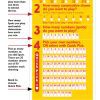Welcome to the exciting world of Blackjack! If you’re wondering, “What are the rules of Blackjack?” you’ve come to the right place. This popular card game is not only thrilling but also easy to learn. So, get ready to dive into the basics, have loads of fun, and test your luck and skills at the Blackjack table. Let’s go!
In Blackjack, the objective is simple: beat the dealer’s hand without going over 21.
To start the game, you’ll be dealt two cards, and the dealer will also receive two cards, with one facing up.
Each card has a value, and numbered cards are worth their number, face cards are worth 10, and an Ace can be counted as 1 or 11.
Now, it’s time to make your move by choosing to hit (receive another card) or stand (keep your current hand).
As you play, remember that each decision counts, and you’ll need to strategize to maximize your chances of winning. Keep in mind that Blackjack is not solely based on luck; it involves skill and decision-making. So, get your game face on and let’s explore the fascinating world of Blackjack rules together!

What Are the Rules of Blackjack?
Blackjack is one of the most popular casino games, offering an exciting combination of strategy and luck. Whether you’re a seasoned player or a novice, understanding the rules of blackjack is essential for a successful gaming experience. In this article, we’ll dive deep into the intricacies of the game and walk you through the fundamental rules that govern it. By the end, you’ll be equipped with the knowledge needed to hit the tables with confidence.
The Objective of Blackjack
In blackjack, the main objective is to beat the dealer’s hand without exceeding a total card value of 21. The game is played with one or more standard decks of 52 cards, and each card has a designated value. Number cards are worth their face value, face cards (King, Queen, and Jack) are worth 10, and an Ace can be worth either 1 or 11, depending on the player’s preference.
At the start of each round, both the player and the dealer are dealt two cards. The player’s cards are usually face-up, while one of the dealer’s cards may be hidden. The player then decides whether to request additional cards (hit) or to stick with their current hand (stand). The player aims to form a hand that beats the dealer’s without going over 21. If the player exceeds 21, they go bust and lose the round. If the player’s hand is closer to 21 than the dealer’s, or if the dealer goes bust, the player wins the round.
It’s important to note that blackjack also allows players to utilize additional options such as doubling down (doubling their original bet and receiving only one additional card) or splitting pairs (separating two cards of the same value to create two individual hands).
The Value of Cards in Blackjack
As mentioned earlier, cards in blackjack have assigned values. Number cards retain their face value (e.g., a 2 of hearts is worth 2, a 7 of diamonds is worth 7), and face cards (King, Queen, Jack) are all worth 10. The Ace holds a special position in blackjack, as it can be worth either 1 or 11, depending on the player’s hand.
For example, if a player is dealt an Ace and a 7, they can choose to count the Ace as either 1 (totaling 8) or 11 (totaling 18). This flexibility allows players to strategically adapt their hand to the current game situation. It’s essential to note, however, that if a player holds an Ace that is currently valued at 11, and then receives additional cards that cause their hand to exceed 21, the Ace’s value will automatically be reduced to 1 to prevent the player from going bust.
Understanding the value of each card is crucial in blackjack, as it influences the player’s decisions on whether to hit or stand. It’s also important to note that the dealer must follow specific rules regarding when to take additional cards and when to stand, which we will explore in the next section.
The Dealer’s Rules in Blackjack
While the player has the freedom to make choices based on their hand, the dealer’s actions are strictly determined by the rules of the game. In most variations of blackjack, the dealer must hit (request additional cards) until their hand reaches a value of 17 or greater. Once the dealer’s hand reaches this threshold, they must stand (stop requesting additional cards) and compare their hand to the player’s. If the dealer’s hand total exceeds 21, they go bust, and all players who have not already gone bust are declared winners.
It’s important to note that the specific rules regarding the dealer’s actions may vary slightly depending on the variant of blackjack being played. For instance, in some variations, the dealer may be required to hit on a soft 17 (a hand that contains an Ace valued at 11), while in others, they may be required to stand.
By understanding the rules that govern the dealer’s actions, players can develop strategies to maximize their chances of winning. Analyzing the dealer’s exposed card, considering the probabilities of different outcomes, and making informed decisions based on these factors can greatly enhance a player’s blackjack gameplay.
The Role of Strategy in Blackjack
While blackjack does involve an element of luck, strategic decision-making is crucial to long-term success. Developing a solid blackjack strategy involves understanding the statistics, probabilities, and odds associated with the game.
One of the most well-known strategies in blackjack is basic strategy, which provides players with optimal decisions based on their hand and the dealer’s exposed card. Basic strategy charts are available online and can be used as a guide to inform players on when to hit, stand, double down, split pairs, or surrender.
Using basic strategy can significantly reduce the house edge and improve a player’s chances of winning. However, it’s essential to note that basic strategy is not a guaranteed winning formula. It simply provides the statistically optimal decisions for different scenarios. Additionally, card counting, while commonly associated with blackjack, is often frowned upon by casinos and can lead to players being banned or excluded from playing.
Tips for Playing Blackjack
Here are some tips to keep in mind when playing blackjack:
- Learn and familiarize yourself with basic strategy to make statistically optimal decisions.
- Manage your bankroll wisely and set limits on how much you’re willing to spend.
- Take advantage of any bonuses, promotions, or rewards offered by the casino.
- Avoid taking insurance (a side bet offered when the dealer shows an Ace) as it typically has a high house edge.
- Practice your skills in free online blackjack games before playing with real money.
- Don’t let emotions dictate your decisions. Stick to your strategy and avoid chasing losses.
- Know when to walk away. If you’re on a losing streak or have reached your predetermined limit, it’s best to step away from the table.
Advanced Blackjack Strategies
While basic strategy is a solid foundation for playing blackjack, experienced players sometimes employ advanced strategies to further optimize their gameplay. Here are three notable advanced strategies:
1. Card Counting
Card counting involves keeping track of the ratio of high-value cards to low-value cards that remain in the deck. This strategy enables players to make more informed decisions based on the probability of receiving favorable cards. However, it is essential to note that card counting is not illegal, but it is discouraged by casinos, and individuals suspected of card counting may be asked to leave.
Card counting requires great concentration, practice, and the ability to perform calculations quickly. It is not recommended for beginners, as mistakes can easily lead to errors in strategy and can result in significant losses. Additionally, many casinos employ prevention measures, such as using multiple decks, shuffling more frequently, or employing automated shuffling machines to make card counting more challenging.
It’s essential to check the rules and regulations of the specific casino you’re playing in, as card counting policies may vary.
2. Shuffle Tracking
Shuffle tracking is another advanced technique that involves tracking packets of cards through the shuffling process. By doing so, players can anticipate when desired cards may appear and adjust their bets accordingly. Shuffle tracking requires a keen eye, excellent memory, and the ability to swiftly identify specific cards as they are shuffled.
Similar to card counting, shuffle tracking is not illegal but may be discouraged by casinos. It is a complex technique that requires considerable practice to master and is generally not recommended for casual players.
3. Hole Carding
Hole carding is a technique that exploits the unintentional exposure of the dealer’s hole card. In some variations of blackjack, the dealer’s second card, also known as the hole card, may be partially visible due to careless dealing or worn-out cards. Observant players may use this information to gain an advantage and adjust their strategy accordingly.
While hole carding can provide a significant edge, it’s crucial to note that the practice is considered unethical and is strictly forbidden in all reputable casinos. Attempting to hole card can lead to severe consequences, including being banned from the casino and potentially facing legal repercussions.
Blackjack Variations
Blackjack has evolved over the years, resulting in various exciting variations of the game. Here are some popular blackjack variations you may encounter:
1. Spanish 21
Spanish 21 is a blackjack variant that is played without all the 10-value cards, resulting in a deck of 48 cards. The game offers additional bonuses for specific hand combinations, such as a 5-card hand totaling 21.
2. Double Exposure Blackjack
In Double Exposure Blackjack, both of the dealer’s cards are dealt face-up, giving players full knowledge of the dealer’s hand. However, to compensate for this advantage, the game often includes additional rules that favor the house, such as the dealer winning on ties.
3. Pontoon
Pontoon is a British variant of blackjack where the objective is to achieve a hand totaling 21 or less. The game utilizes unique terminology and specific rules, including the dealer winning all ties.
4. Blackjack Switch
In Blackjack Switch, players are dealt two hands and have the option to swap the second card of each hand. This variation introduces an exciting strategic element, allowing players to create better hands by exchanging cards.
5. Live Dealer Blackjack
Live Dealer Blackjack brings the authenticity and excitement of a physical casino to the online realm. Players interact with live dealers via video stream and can communicate with them throughout the game.
Conclusion
Understanding the rules of blackjack is essential for any player looking to enjoy this thrilling casino game. By grasping the objective, learning about card values, and comprehending the dealer’s rules, players can confidently take their seats at the blackjack table. Developing a solid strategy and employing tips such as proper bankroll management and practicing responsible gambling can further enhance the gaming experience. Remember, ultimately, blackjack is a game of both skill and chance, so enjoy the process and may the cards be in your favor!
Key Takeaways: What Are the Rules of Blackjack?
- Know that the goal of blackjack is to beat the dealer’s hand without going over 21.
- Understand that each card has a value: numbered cards are worth their face value, face cards are worth 10, and an Ace can be worth 1 or 11.
- Be aware that the dealer gives two cards to each player and keeps two cards for themselves, with one card face down.
- Remember that players can choose to “hit” (receive another card) or “stand” (keep their current total) to get as close to 21 as possible without going over.
- Realize that if a player’s total exceeds 21, they bust and lose the round, while if their total is closer to 21 than the dealer’s, they win.
Frequently Asked Questions
Are you curious about the rules of blackjack? Look no further! Below, we have compiled a list of frequently asked questions to guide you through the ins and outs of this popular card game.
1. How do you play blackjack?
In blackjack, the main goal is to beat the dealer’s hand without going over 21. Each player is dealt two cards, and the dealer receives one card face-up and one face-down. Players must decide whether to “hit” (draw another card), “stand” (keep their current hand), or make other strategic moves based on the value of their cards and their predictions of the dealer’s hand. The values of the cards are straightforward: numbered cards are worth their face value, face cards (Jack, Queen, and King) are each worth 10, and Aces can be worth either 1 or 11, depending on the player’s preference.
To win a hand of blackjack, you either need to have a higher hand value than the dealer’s, or make the dealer go over 21 (bust). It’s important to note that if both you and the dealer have the same hand value, it’s considered a “push” and your bet is returned.
2. Can the rules of blackjack vary?
While the core rules of blackjack remain consistent across most casinos, there may be slight variations in specific rules and payouts. For example, some casinos may have different rules regarding the number of decks used, whether the dealer hits or stands on a soft 17, or if surrender or doubling down is allowed. It’s always wise to familiarize yourself with the specific rules of the casino you are playing at before placing your bets.
However, regardless of any minor differences, the fundamental objective of blackjack remains unchanged: to achieve a hand value that is higher than the dealer’s without going over 21.
3. What happens if you and the dealer both get blackjack?
When both you and the dealer have blackjack (a hand consisting of an Ace and a 10-value card), it results in a “push.” In this scenario, your bet is returned to you and no winnings or losses are incurred. It’s essentially a tie between you and the dealer. However, it’s worth noting that if you have a regular winning hand (without blackjack) and the dealer also gets blackjack, you will lose the hand and the bet.
It’s important to remember that while blackjack is a game of skill, there is still an element of chance involved. The odds of both you and the dealer getting blackjack are relatively low, but it can happen occasionally.
4. What are the basic strategies in blackjack?
While each blackjack player may have their own preferred strategy, there are a few basic principles that can increase your chances of winning. Firstly, it’s crucial to understand the value of each card and make decisions based on the dealer’s visible card. For example, if the dealer’s visible card is a low value (2-6) and you have a hand value of 12 or above, it’s generally recommended to stand rather than risk going bust.
Another important strategy is to familiarize yourself with the concept of card counting. This technique involves keeping track of the relative number of high and low-value cards left in the deck, giving you an estimation of the probability of getting certain cards. However, it’s essential to note that card counting is not allowed in many casinos and can result in being banned from the premises.
5. Can you split and double down in blackjack?
Yes, you can split and double down in blackjack, depending on the rules of the specific casino you are playing at. Splitting is an option when you are dealt a pair of cards with identical face values. By splitting, you create two separate hands and must place an additional bet equal to your original wager. Each hand is then played individually, with an opportunity to win or lose twice as much.
Doubling down, on the other hand, allows you to double your initial bet after you receive your first two cards. However, in most cases, when you choose to double down, you will be limited to receiving only one additional card. Doubling down is often advantageous when you have a hand value of 9, 10, or 11, and the dealer’s visible card is weak (2-6).
How to Play Blackjack
Summary
Playing Blackjack is a fun card game, but it’s important to know the rules. The main goal is to get a hand with a total value closer to 21 than the dealer’s hand, without going over. You can choose to hit, which means adding another card to your hand, or stay, which means keeping your current hand. It’s important to know the value of each card – numbered cards are worth their face value, face cards are worth 10, and an Ace can be worth 1 or 11. Remember, don’t be afraid to ask questions and have fun while playing Blackjack!
In Blackjack, there are a few important rules to remember: the dealer will always hit until they reach 17 or higher, if your hand goes over 21, you bust and lose automatically, and you can double down on your original bet, which means doubling your bet in exchange for one more card. It’s also important to be familiar with the basic strategy, which is a mathematically-proven guide on how to play each hand. Knowing the rules and strategies will help you make better decisions and increase your chances of winning. So get ready, grab a deck of cards, and start practicing your Blackjack skills!









